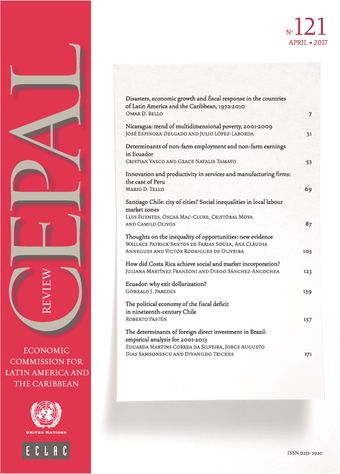-
The determinants of foreign direct investment in Brazil: Empirical analysis for 2001-2013: Eduarda Martins Correa da Silveira, Jorge Augusto Dias Samsonescu and Divanildo Triches
- Source: CEPAL Review, Volume 2017, Issue 121, أكتوبر ٢٠١٧, p. 171 - 184
- الإسبانية
-
- ٢٣ أكتوبر ٢٠١٧
- Previous Article
- Table of Contents
- Next Article
Abstract
This article aims to analyse the determinants of foreign direct investment (FDI) into Brazil between 2001 and 2013. It uses a vector error correction (VEC) model to analyse both the long-term function and the impulse-response function. The results show that levels of economic activity, wages and productivity are positively related to FDI inflows, which means that investors pursue market-seeking and efficiency-seeking strategies when targeting the Brazilian market. Although less important, the stability of the national economy and the exchange rate also proved statistically significant in explaining FDI inflows.
© United Nations





